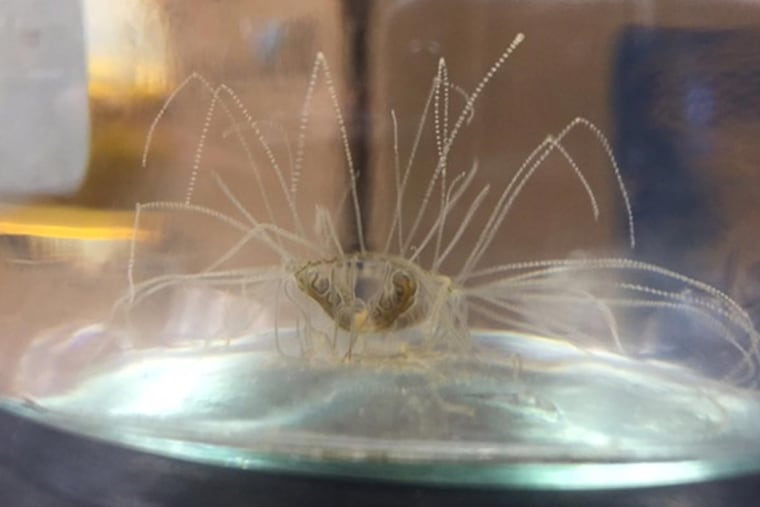The return of the clinging jellyfish
Blooming for the second year in a row, biologists say the stinging species may "become a common feature in New Jersey" rivers.

They're back.
The dime-sized clinging jellyfish that pack a horrific sting have reappeared in the shallow waters of the Shrewsbury River in New Jersey.
On June 2, 17 adult jellyfishs were found at sampling locations, NJ.com reported.
"This year's individuals appear to be blooming at the same time as last year's individuals," Paul Bologna, director of the Marine Biology and Coastal Sciences Program at Montclair State University, said in a news release. "This suggests that annual blooms may become a common feature in New Jersey."
The sting can cause muscle weakness and serious medical problems, including kidney failure. Last year, a Middletown man was hospitalized after he was stung while swimming in the Shrewsbury River, according to NJ.com.
Clinging jellyfish are unlikely to be found on coastal beaches, as they prefer calm waters.
Last summer, Montclair biologists predicted the species would return.
The jellyfish are native to Asian Pacific coastal waters and have a red, orange or violet cross across their middle. They have 60 to 90 tentacles that uncoil like sharp threads and emit painful neurotoxins. They feed at night by dropping down through water, capturing plankton with their trailing tentacles.